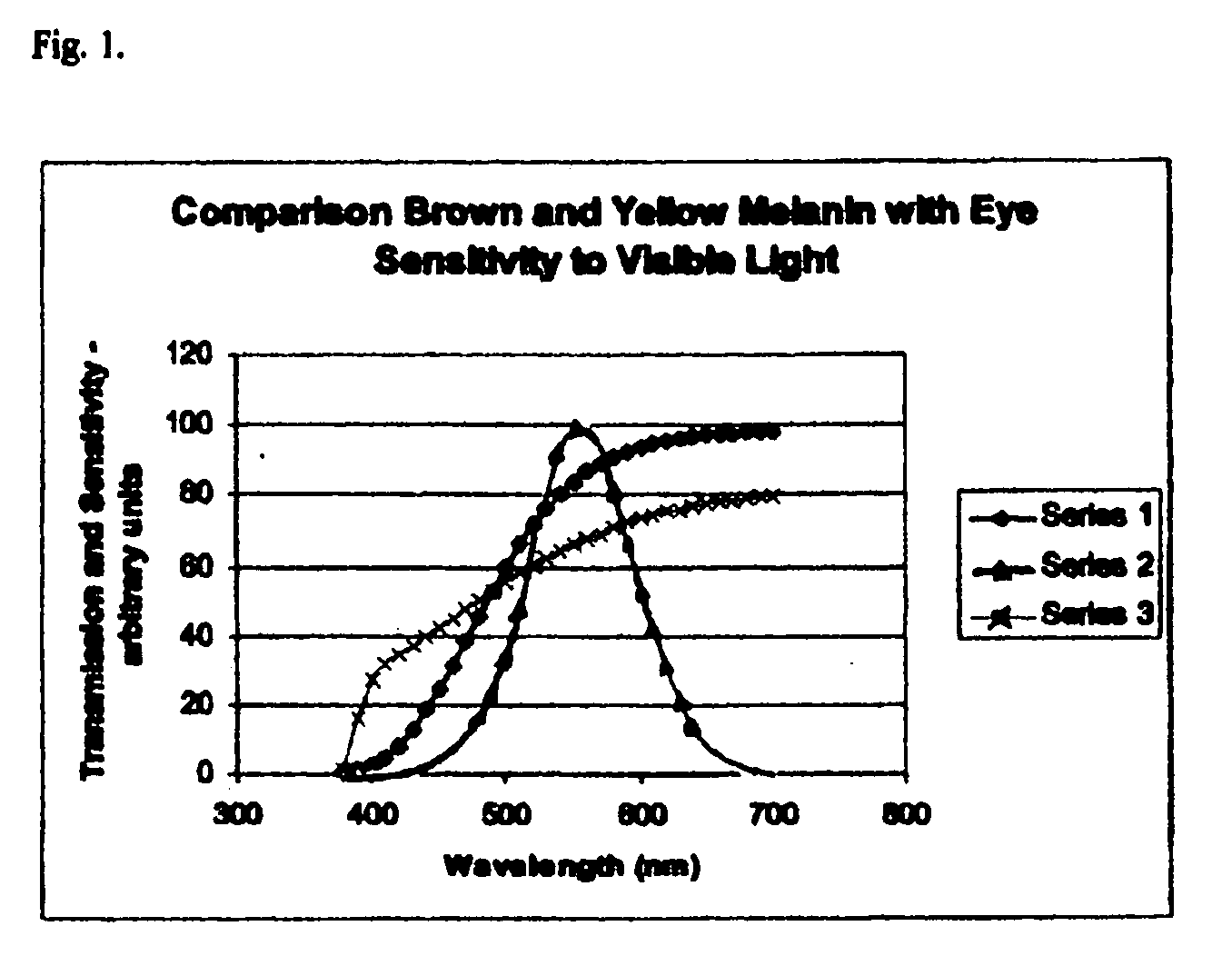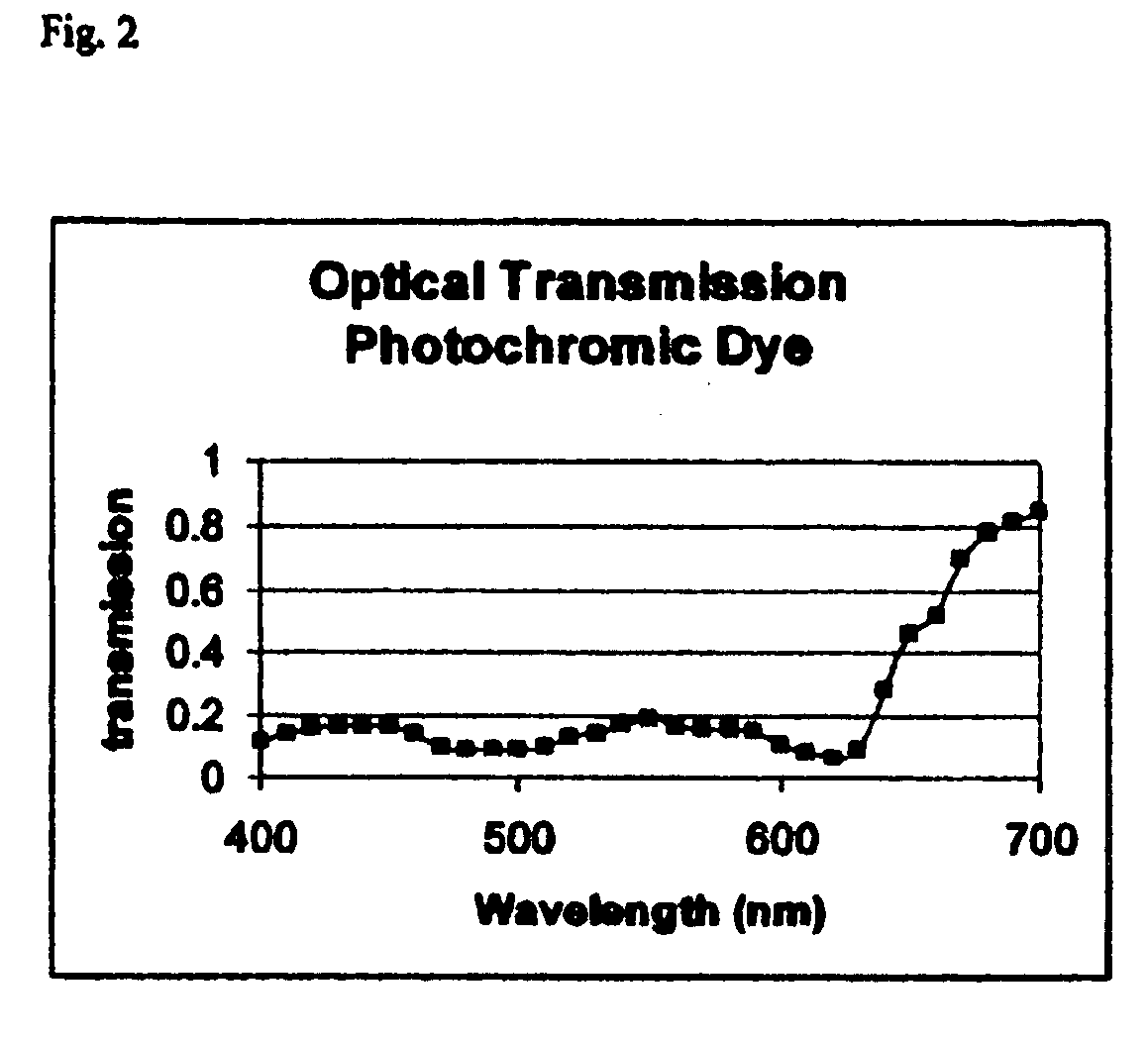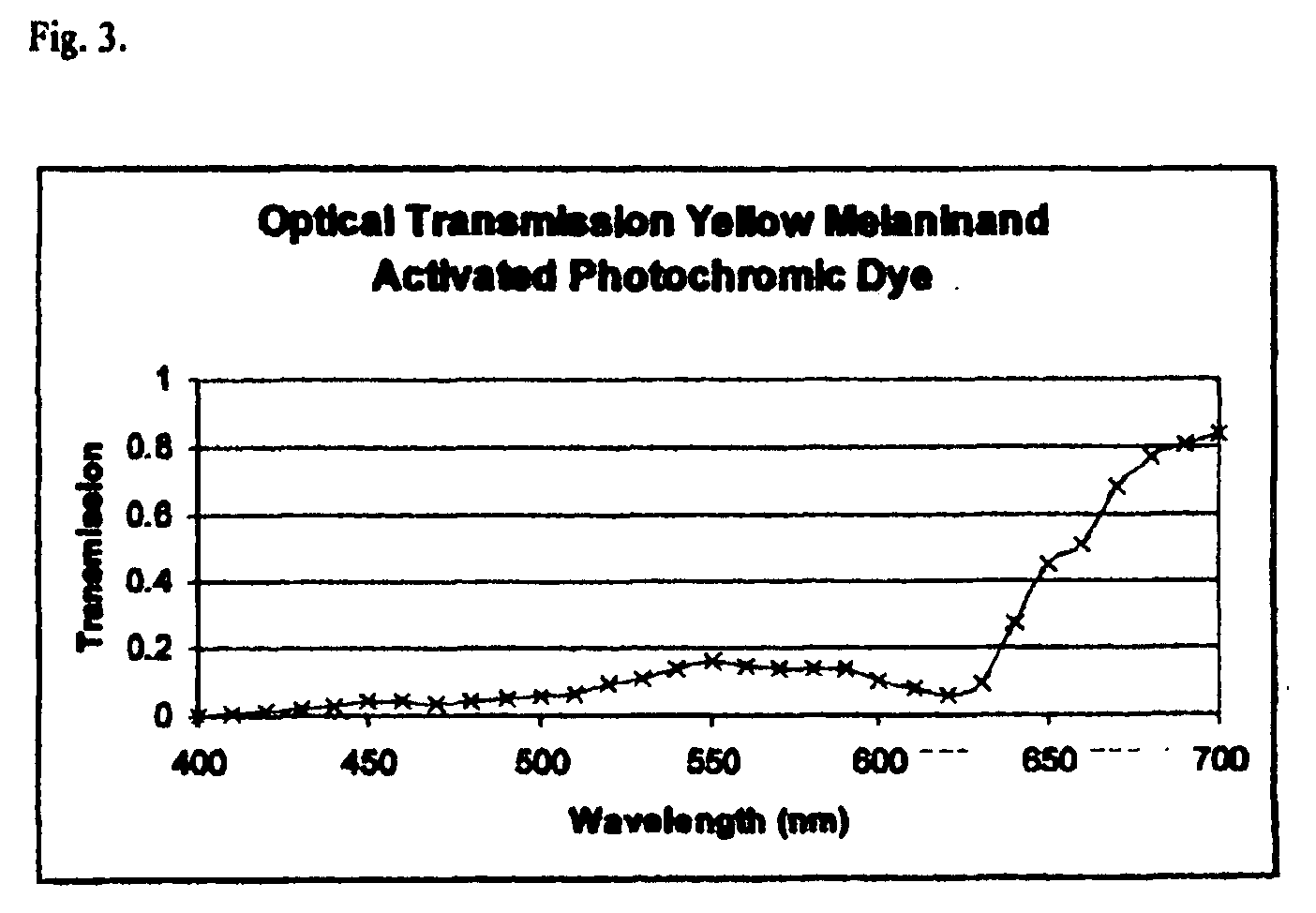Light filters using yellow melanin and melanin-like oligomers and photochromic dyes
a technology of yellow melanin and light filter, applied in the field of melanins, can solve the problems of brown melanin not being suitable, and achieve the effect of reducing hev light adequately, low transmission and high transmission
- Summary
- Abstract
- Description
- Claims
- Application Information
AI Technical Summary
Benefits of technology
Problems solved by technology
Method used
Image
Examples
example 1
Preparation of Selectively Fractionated
Portion IV Melanin
[0047]Ten (10) grams of derivatized melanin obtained from Photoprotective Technologies, Inc. of San Antonio, Tex., was dispersed in 100 mL of tetrahydrofuran (THF) by stirring for 1 hour. 100 mL of hexane was added next drop-wise over a period of 1 hour. The precipitated material was separated and an additional 200 mL of hexane was added drop-wise to the material that remained suspended to obtain a hexane to THF ratio of 3:1. The precipitated material (Portion IV) was collected and dried.
example 2
Preparation of Yellow Melanin from Fractionated Melanin
[0048]1. 340 mg of selectively precipitated Portion IV melanin and 1.50 g of benzoyl peroxide were dissolved in 20 mL of THF in a 50 mL round bottom flask
2. The reaction vessel was fitted with an air cooled condenser.
3. The reaction was placed in a water bath which was heated from 60-640 C for 20 h.
4. The reaction was removed from the heat, cooled and poured into 80 mL of hexane over 20 sec with swirling.
5. The precipitate was allowed to settle and the supernatant poured off.
6. 20 mL of THF was added and the material quickly dissolved. This was poured into 70 mL of hexane over 20-30 sec with swirling. Fluffy precipitate appeared quickly and after 20 min the supernatant was filtered.
7. The material was allowed to dry and yielded about 240 mg of yellow melanin.
8. The spectra of the yellow melanin is shown in series 1 curve of FIG. 1.
example 3
Preparation of a Yellow Melanin Photochromic Lens System
[0049]One hundred (100) mg (0.1 g) of yellow melanin, as prepared in Example 2. was dissolved in 100 g of CR39 (diethylene glycol bis-allylcarbonate), trade name of PPG. The system was heated to 55 degrees Celsius and three grams of benzoyl peroxide was dissolved and the mixture was poured into a glass lens mold with a spacing of 1.5 mm. The temperature of the mold was increased gradually over three hours and the solid plastic lens was removed. It had a transmission of 85% at 550 nm.
[0050]A mixture of two photochromic dyes, indolino spironaphthoxyazines and pyridobenzoaxine was uniformly dispersed in a Loctite adhesive and several drops were placed onto the lens of Example 1 containing the yellow melanin. A second clear lens with the same radius of curvature as the first lens was pressed against the first lens to form a laminated lens. The concentration of the photochromic dyes was adjusted to give the optical spectrum shown in...
PUM
| Property | Measurement | Unit |
|---|---|---|
| Fraction | aaaaa | aaaaa |
| Transparency | aaaaa | aaaaa |
| Plasticity | aaaaa | aaaaa |
Abstract
Description
Claims
Application Information
 Login to View More
Login to View More - R&D
- Intellectual Property
- Life Sciences
- Materials
- Tech Scout
- Unparalleled Data Quality
- Higher Quality Content
- 60% Fewer Hallucinations
Browse by: Latest US Patents, China's latest patents, Technical Efficacy Thesaurus, Application Domain, Technology Topic, Popular Technical Reports.
© 2025 PatSnap. All rights reserved.Legal|Privacy policy|Modern Slavery Act Transparency Statement|Sitemap|About US| Contact US: help@patsnap.com



